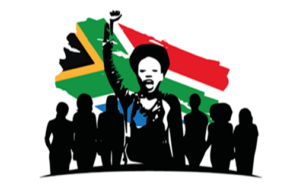- Posted on
- by sadocc-admin
Forum Südliches Afrika, 24. November 2022: Violence in South Africa

Violence in South Africa –
A crisis out of control or a social problem that can be prevented?
Vortrag von Matodzi Michelle Amisi
Online-Veranstaltung in englischer Sprache
24.11.2022 – 19:00 Uhr
Violence in South Africa is often portrayed as an ever worsening problem. Much of the conversations discusses the nature of the magnitude of problem and its different manifestations, either focusing on latest national crime statistics or public cases. However, there is complexity that gets lost when we present violence this way. Lost also is sight of what can be done to prevent or reduce violence. Drawing on recent work of the Violence Prevention Forum, the presentation will share lessons from recent evidence of what holds promise to prevent violence in South Africa and challenges and opportunities with current attempts to prevent violence at scale. The presentation will aim to stimulate discussions about possibilities to expand building on this growing work in ways that can move the dial in lived experiences of people in South Africa.
Matodzi Michelle Amisi is a research/evaluation consultant with extensive experience in government/public administration in South Africa. She is a senior research consultant at the Institute for Security Studies in Pretoria. From 2007-2013 she worked in the South African government. She was part of the team that established the National Evaluation System in South Africa. She lectured in MPHIL and Master’s in public policy at the Nelson Mandela School of Public Governance at the University of Cape Town. Matodzi Michelle Amisi has a keen interest in M&E and evidence use in the violence prevention sector, focusing on what works to prevent violence against women.
gefördert durch

Summary
Reasons for crime beyond poverty and the legacy of Apartheid
Matodzi was intrigued by the issue of Apartheid and whether its legacy still has some effect on the rate of crime in South Africa. In general, she wondered if it is possible to talk about SA and not mention the legacy of Apartheid and its lingering effect on the country. Many people would think that it’s been around 30 years and that perhaps we should be focused on other more current or prominent issues beyond the courses of our past. This thought in itself indicates an underestimation of how deeply oppressive systems of governance affect those who live through them.
Matodzi goes on to quote Jeffrey Alexander’s thoughts on group conflict, namely “the subject of injury is typically conceived to be interest denied or capacity suppressed.” In South Africa we often talk about access that was denied to education, work, social mobility etc. The response to these denials were rebellion (anti-Apartheid Movement). These systems shape the social identity and structures of those that live through them and the effect of this doesn’t simply end with the regime and cannot be understated.
Crime as a threat for society and social development
There is no question that violence and crime is a serious problem for South Africa. The chance of a citizen dying from intentional homicide is higher than most countries. Rape levels have been compared to countries that are in active combat or are facing some sort of internal instability. Gender Based Violence (GBV) alone costs South Africa R42 Billion Per Annum and violence experienced by children costs the country more than R200 Billion Per Annum. (2016/2017 estimates)
Why is there a rise in violent crime like murder and rape in South Africa?
Children who are growing up in these adverse conditions of structural and cultural violence are more likely to grow up and commit direct acts of physical violence or contribute to the criminality element in South Africa, particularly black children growing up in the townships like Soweto. Children growing up in these environments are exposed to poverty, a lack of food and security, community disruption, lack of opportunity and social mobility. This coupled with the pressure the parents of these children face, manifests itself in emotional and physical neglect as well as substance abuse and domestic violence in the home.
The buildup of several of these adverse childhood experiences is what causes the children to grow up and resort to a life of criminality, to not finish their schooling, unemployment and have psychological issues. Violent men Archetype – poverty, extensive exposure to abuse and neglect in childhood, bullied at school, having a cruel father. Some say that even those who escape these conditions or who are more a part of the middle class, are still subject to the power of the more affluent classes who pushback against government efforts to redistribute resources.
It is therefore not the misguided belief that violence is propagated by some ‘mysterious black men lurking in the shadows’, but due to the result of an unequal distribution of social structures. These unequal structures provide good business opportunities for the upper class as it is a source of cheap labor (domestic workers, gardeners, cleaners etc.) which only furthers the structural divide and spatial injustices.
Spatial injustice is a massive factor as you are limited to the opportunities provided by your environment. Children often face poverty and walk many miles to simply get to school to be afforded the opportunity to learn in a stable environment with cultural opportunities. Parents have to work far from home for many hours and are unable to look after their children or participate in their lives in any way.
Prevention of crime and Gender Based Violence – what does or does not work?
The work that the Crime Preventative Forum has been doing shows that there is no easy way to reduce the violence or make the country safer. We need more than just the police, due to the fact that the circumstances that lead to murder such as; domestic violence or arguments or misunderstandings, account for most of the resultant violence, and these circumstances or situations are often beyond the control of the police.
One of the resources that South Africa has that it can build on, is that it has numerous organizations that are working to strengthen community policing. They provide care to victims so that the trauma they experience does not lead to further violence. They provide access to education for children in an effort to shield them from the violence of their surroundings, as they are most vulnerable from the time that school ends to the time that they come home from work.
The main lessons from the interventions show that in order to reduce violent crime and GBV it is critical for children to remain connected to the school, parenting programs must reduce harsh parenting improve parent child relationships, early intervention is key, specifically those that address GBV should include boys and girls and finally access to grants for adolescents can have a transformative effect.
Violence prevention in South Africa requires the whole of society working deliberately and sustainably to remove sources of harm and inequality, and heal wounds, by intentionally growing an ethic of mutual care, respect and inclusion to build peace.
In conclusion, there are many reasons for the violence experienced in South Africa and the increase in violence in South Africa, there are however interventions that can be implemented to get a hold on these acts of violence, which shows promise of a South Africa whose citizens aren’t plagued by these acts.
Discussion
The insightful presentation by Matodzi was followed by a lively discussion with the participants. The following paragraphs will focus on some of the many points raised during the lengthy discussion. The discussion flowed towards the issue of foreign African nationals migrating to South Africa and the effect of this on the violence and crime experienced in South Africa. Matodzi answered that the migration of foreign nationals is not a direct cause of violence but the failure of the state to mitigate these foreign nationals and provide the proper care and frameworks for a seamless integration into society and to keep track of these people.
Other questions were raised regarding the efficacy of the police force in South Africa and the response of the police toward crimes and violence in South Africa. Matodzi answered that the police resources are also not equitably distributed in South Africa and that some stations might have more resources and could reply quicker and vice versa. Another factor is that there is not a functioning central number to call nationally to get a hold of the police. Those who are more affluent have access to more private forms of security and those are the ones most likely to respond, whereas the poorer districts are at the mercy of police precincts who might not be fully equipped to deal with the whole sector. Many people also don’t trust the police and are therefore hesitant to call them and fall victim to secondary victimizations by the police.
Another interesting point raised was the growth of the private security sector, Matodzi went on to state that the growth of this sector was a direct result of the weakness of the state and the fear of the people regarding safety and the distrust of the police force’s morality and efficacy. It shows how massive the problem actually is and that the quantity of the violence plays second fiddle to the nature of the violence in itself. Despite massive investment in public and private security the problem is still there and the rate of violent crime is still on the rise, according to Matodzi this is an indication that it is in fact a social problem, not a matter of expenditure and protecting areas and that the need to reduce the amount of people taking part in these crimes needs to be reduced.
In conclusion, Matodzi is rather optimistic about the future of South Africa with regards to the prevention of violent crimes and violence. Matodzi believes that there are sufficient foundations and networks built in South Africa, in order to combat these issues and stem the flow of violence. She believes however that despite there being a solid ground, this is not enough to guarantee success at the task at hand and that it is still a massively difficult task to achieve and only through the working together of all of these elements can success be found.
by Shuaib Manuel
